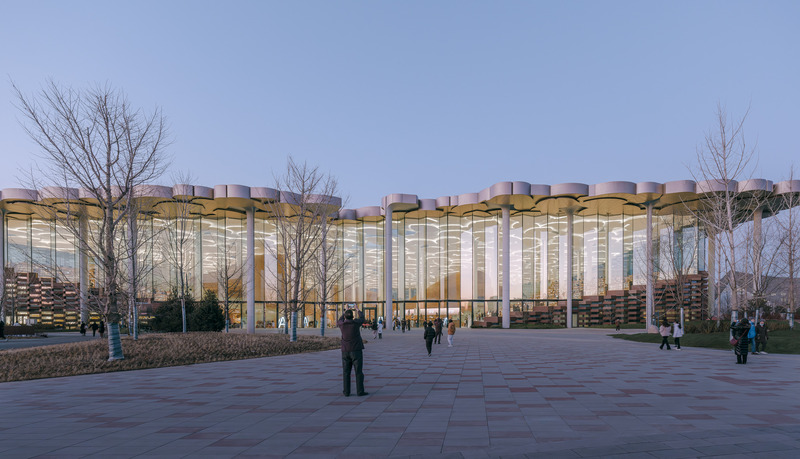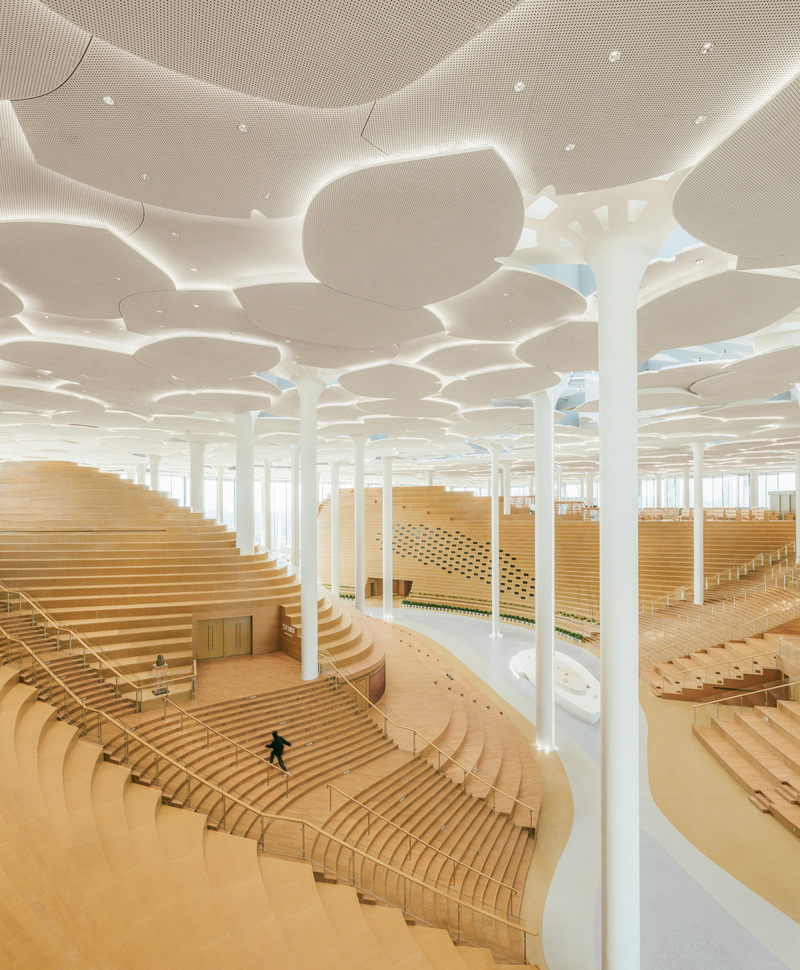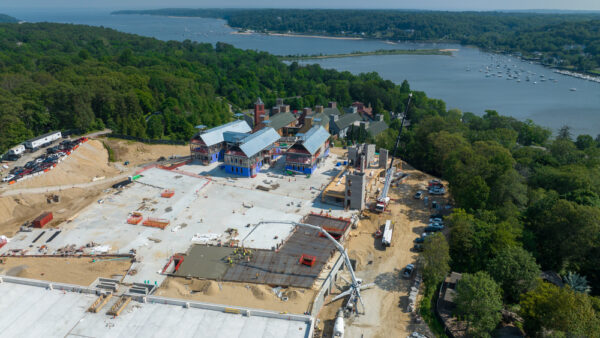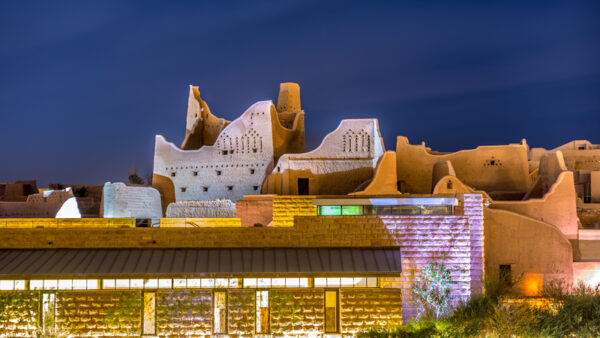
The Beijing City Library, designed by Norwegian architect Snøhetta in association with local company ECADI, has opened to the public.
The 75,000 sq m project’s design is inspired by the surrounding hills and the valley of the Tonghui river, which it reproduced in “the Valley” – the building’s main circulation artery.
Around the Valley is a sculpted interior containing the world’s largest “climatised reading space”. This looks like terraced hills and acts as ground, seating and shelving, allowing visitors to relax, talk, or read quietly.
Semi-private reading areas and conference rooms are embedded in the hills, and book stacks and table seating are set on top. Columns that resemble ginkgo leaves carry out support duties, and also contain sensors and equipment to control climate, lighting and acoustics, as well as collecting rainwater from the roof. Meanwhile, real ginkgos are planted at the northern and southern edges of the building.

The project used modular components and a rationalised structural grid to reduce building waste. A roof overhang will reduce solar gain – an important consideration given that the building’s glass façade is the largest load-bearing system of its kind in China.
Kjetil Trædal Thorsen, Snøhetta’s co-founder, said: “It is the love people have for books that has made libraries survive the digital age and hold new potential to give back more to the city and its public.
“It is up to us to reinterpret the relationship between body, mind and surroundings to rekindle the joy of reading away from the screen. Libraries are here to stay.”
Robert Greenwood, director of Snøhetta Asia Pacific, said: “The role libraries play in society and the way people use them has vastly changed. They are now needed to function as vibrant community spaces, enabling social interaction and knowledge-sharing.”






